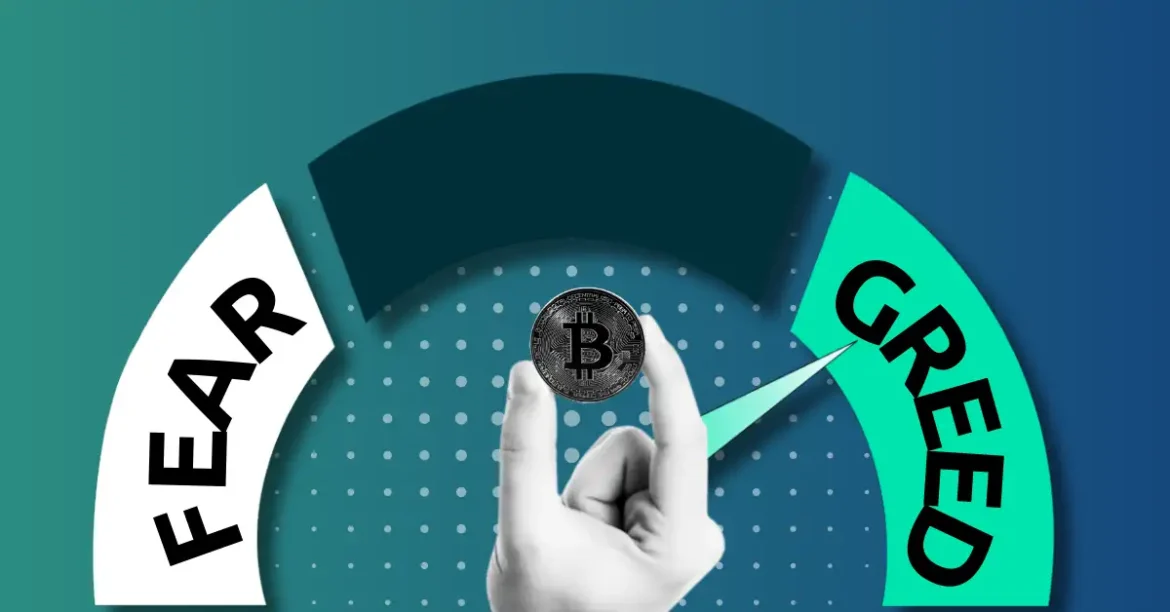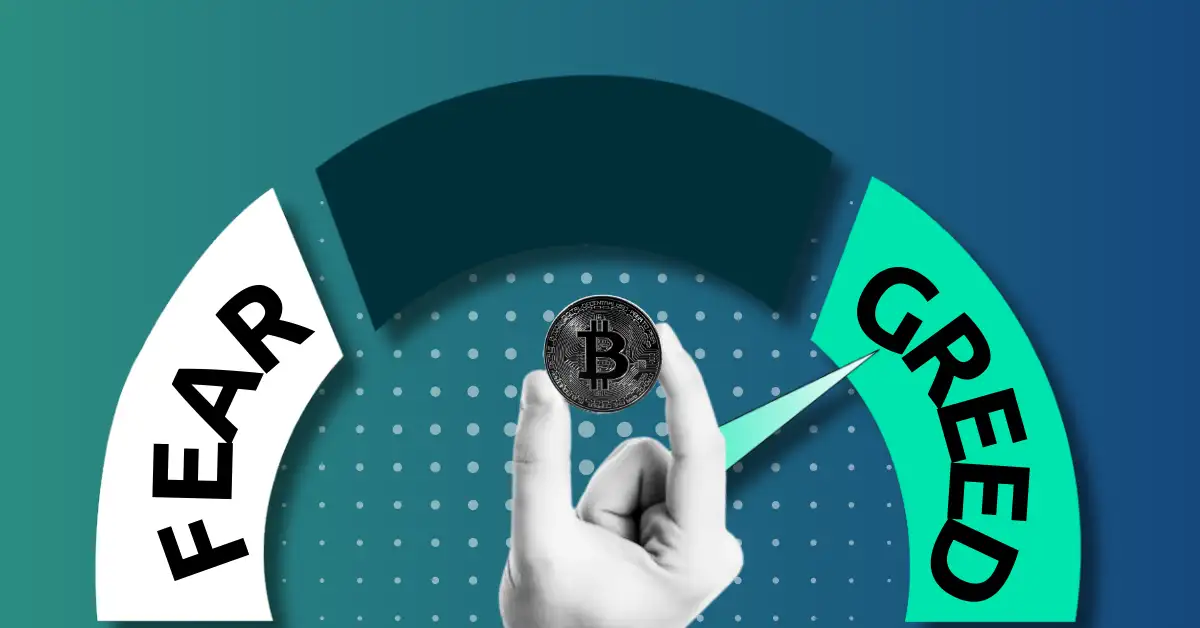Decoding Crypto Sentiment: A Deep Dive into the Bitcoin Fear and Greed Index
The cryptocurrency market, renowned for its volatility and rapid fluctuations, often leaves investors grappling with uncertainty. In this dynamic landscape, the Bitcoin Fear and Greed Index emerges as a crucial tool, offering a snapshot of market sentiment and potentially guiding investment decisions. This report delves into the intricacies of the Fear and Greed Index, exploring its methodology, interpretation, and implications for Bitcoin and the broader crypto market.
Understanding the Crypto Fear and Greed Index
The Crypto Fear and Greed Index is a single-number representation of overall market sentiment, typically ranging from 0 to 100. This score is calculated by analyzing several key factors, providing a comprehensive gauge of whether investors are feeling fearful or greedy. A low score (near 0) suggests “extreme fear,” indicating that investors are worried about potential losses, which can often present buying opportunities. Conversely, a high score (near 100) signifies “extreme greed,” suggesting excessive optimism and a potential market bubble.
Components of the Index: Gauging Market Emotions
The Fear and Greed Index doesn’t rely on a single data point but rather aggregates information from multiple sources to paint a holistic picture of market sentiment. While the exact methodologies can vary slightly between different providers (like CoinMarketCap, Alternative.me, and CoinCodex), common factors include:
- Volatility: Measures the current volatility of Bitcoin compared to its historical average. Higher volatility often correlates with increased fear.
- Market Momentum/Volume: Examines trading volume and market momentum. High buying volume relative to selling volume can signify greed.
- Social Media: Analyzes sentiment on social media platforms. Positive or negative mentions and trends can sway the index.
- Dominance: Assesses Bitcoin’s dominance compared to other cryptocurrencies. Increased Bitcoin dominance might indicate a flight to safety during periods of fear.
- Trends: Studies search trends related to Bitcoin, like search queries for “Bitcoin price manipulation”. A sudden surge in such queries suggests potential fear or uncertainty.
- Surveys: Some indices also incorporate the results of surveys conducted among crypto investors and traders.
By weighing these factors, the index attempts to quantify the often-irrational emotions that drive market behavior. It’s this emotional element that can lead to market overreactions and create opportunities for savvy investors.
Interpreting the Index: A Guide to Market Mood
The Fear and Greed Index offers a straightforward way to understand the prevailing mood in the crypto market:
- 0-25: Extreme Fear: This indicates a high level of anxiety and pessimism among investors. It can often be a signal that Bitcoin is undervalued and that a potential buying opportunity exists.
- 26-49: Fear: Investors are generally cautious and risk-averse.
- 50-75: Greed: The market is showing signs of optimism and excitement. There’s an increased willingness to take risks.
- 76-100: Extreme Greed: This signifies excessive optimism and a potential bubble. Investors become irrational, driven by the fear of missing out (FOMO). This can be a signal that Bitcoin is overvalued and a correction is imminent.
Recent data illustrates how the index fluctuates. For example, in early January 2025, the index plunged from 69 to 50 in a single day, indicating a rapid shift in market sentiment. Similarly, the index surged to 79 in February 2024, its highest level since November 2021, reflecting a period of extreme greed fueled by rising prices.
Applications in Cryptocurrency Trading
The Fear and Greed Index can be a valuable tool for cryptocurrency traders and investors, providing insights that can inform their strategies.
- Contrarian Investing: One of the most common uses of the index is to practice contrarian investing. When the index indicates “extreme fear,” it might be an opportune time to buy Bitcoin, betting that the market will eventually recover. Conversely, when the index signals “extreme greed,” it might be wise to sell or take profits, anticipating a potential correction.
- Timing the Market: The index can help traders time their entries and exits into the market. By observing the index’s movements, traders can identify potential trend reversals and adjust their positions accordingly.
- Risk Management: The index can also be used as a risk management tool. When the index is high, traders might consider reducing their exposure to Bitcoin to protect their profits. When the index is low, they might increase their positions, taking advantage of potentially undervalued prices.
It’s crucial to remember that the Fear and Greed Index is just one tool among many. It should not be used in isolation but rather in conjunction with other technical and fundamental analysis techniques.
Limitations and Considerations
While the Fear and Greed Index can be a valuable indicator, it’s not without its limitations:
- Not a Crystal Ball: The index provides a snapshot of market sentiment, but it’s not a foolproof predictor of future price movements. The cryptocurrency market is influenced by numerous factors, including regulatory changes, technological advancements, and macroeconomic events.
- Potential for Lag: The index relies on historical data, which means it can sometimes lag behind rapid market changes. By the time the index reflects a shift in sentiment, the market might have already moved significantly.
- Subjectivity: The weighting of different factors in the index calculation can be subjective, which means different index providers might produce slightly different results.
- Oversimplification: Reducing market sentiment to a single number can be an oversimplification of complex market dynamics. It’s crucial to consider the underlying reasons driving fear or greed, rather than blindly following the index’s signals.
Therefore, traders should use the index with caution and combine it with other forms of analysis to make informed decisions.
Case Studies: Fear and Greed in Action
Examining specific instances where the Fear and Greed Index signaled market turning points can offer valuable insights:
- November 2021 Peak: As the index soared to 79 in February 2024, mirroring levels last seen in November 2021 (around Bitcoin’s all-time high near $69,000), it served as a warning sign of potential overvaluation. Traders who heeded this signal may have taken profits before the subsequent market correction.
- Bear Market Lows: Throughout 2022, as Bitcoin plummeted from its highs, the index consistently reflected “extreme fear.” Savvy investors who recognized these periods as potential buying opportunities accumulated Bitcoin at discounted prices.
- January 2023 Greed Shift: The index entered the “greed” phase in January 2023 for the first time since March 2022, signaling a shift in momentum after a prolonged bear market. This indicated growing optimism and the potential for further price appreciation.
These examples highlight the index’s potential value in identifying market extremes and informing strategic investment decisions.
Beyond Bitcoin: Applications for Broader Crypto Markets
While the Fear and Greed Index is often associated with Bitcoin, its principles can be applied to the broader cryptocurrency market. Many altcoins tend to follow Bitcoin’s price movements, and overall market sentiment often influences their performance. Therefore, a high Fear and Greed Index reading might suggest caution across the board, while a low reading could signal opportunities in select altcoins with strong fundamentals.
Navigating Crypto’s Emotional Seas
The Bitcoin Fear and Greed Index is more than just a number; it’s a window into the collective psychology of the crypto market. By understanding its components, interpreting its signals, and recognizing its limitations, investors can navigate the volatile waters of cryptocurrency with greater confidence and potentially unlock opportunities that arise from market overreactions. However, the index should be used as one tool in a comprehensive analysis, not as a sole determinant of investment decisions. In the crypto world, fortune favors not only the bold but also the informed.





